1. Introduction to Leather Badges
Leather badges represent a timeless fusion of style, durability, and functionality. These versatile accessories have evolved beyond mere adornment, serving as powerful branding tools and aesthetic enhancements across various applications, particularly within the apparel industry. This comprehensive overview explores the multifaceted world of leather badges, delving into their essence, historical significance, and the compelling reasons for their enduring popularity.
1.1 What Are Leather Badges?
Leather badges are meticulously crafted patches meticulously fashioned from genuine or synthetic leather.
1 These distinctive accessories often incorporate intricate embellishments such as embossing, engraving, or sophisticated printing techniques to showcase unique designs. 2 Leather badges serve a diverse range of functions, including brand identification, product differentiation, and aesthetic enhancement.
2. Leather Badges for Apparel: Elevating Fashion
Leather badges have emerged as a prominent element in the contemporary fashion landscape, providing a sophisticated and enduring means to enhance the aesthetic and brand identity of garments and accessories.
2.1 Branding with Leather Badges: A Symbol of Quality and Heritage
Beyond mere decoration, leather badges serve as powerful brand ambassadors, conveying a message of quality, craftsmanship, and heritage. Whether it’s a meticulously embossed logo, a concise brand slogan, or a unique graphic element, the leather badge acts as a visual testament to the brand’s values and commitment to excellence. This tactile and visually rich element elevates the perceived value of the product and fosters a deeper connection with the consumer.
2.2 Versatile Application: Enhancing a Diverse Range of Apparel
The versatility of leather badges is undeniable. From classic denim jackets and rugged jeans to refined leather goods and stylish headwear, their application spans a wide spectrum of fashion categories. This adaptability allows designers to seamlessly integrate leather badges into existing collections, adding a touch of luxury and individuality to each piece.
2.3 Customization Options: Tailoring to Unique Brand Identities
The true power of leather badges lies in their capacity for customization. Designers enjoy unparalleled freedom in selecting colors, shapes, and embossing techniques, ensuring the final product perfectly aligns with the brand’s unique aesthetic and target audience. This level of personalization allows for the creation of truly distinctive and memorable pieces that resonate with consumers on an emotional level.
Key Improvements:
- Enhanced vocabulary: Utilizing more sophisticated and impactful language (e.g., “prominent element,” “brand ambassadors,” “tactile and visually rich,” “unparalleled freedom”) elevates the overall tone.
- Focus on brand identity: Emphasizing the role of leather badges in conveying brand values and fostering consumer connection strengthens the message.
- Added depth and context: Providing further explanation on the significance of leather badges (e.g., “conveying a message of quality, craftsmanship, and heritage”) enhances reader understanding.
- Improved flow and readability: Minor adjustments to sentence structure and paragraph breaks enhance clarity and readability.
3. Custom Leather Badges for Apparel
Customization of leather badges transcends mere decoration; it elevates them to a powerful tool for brand differentiation and individual expression.
3.1 Benefits of Customization
- Enhanced Brand Identity: Personalized leather badges serve as potent visual identifiers, reinforcing brand recognition and recall among consumers.
- Exclusive Differentiation: Tailored designs ensure exclusivity, setting products apart from the competition and creating a sense of premium value.
- Elevated Product Appeal: The incorporation of custom elements adds a touch of sophistication and craftsmanship, enhancing the overall aesthetic and perceived value of the product.
3.2 Techniques for Custom Leather Badge Creation
A variety of techniques are employed to achieve unique leather badge designs:
- Embossing: Creates raised designs, adding depth and texture.
- Debossing: Creates recessed designs, providing a subtle yet elegant contrast.
- Laser Engraving: Offers intricate detail and precision, ideal for intricate designs.
- Screen Printing: Allows for vibrant color application and large-scale production.
Each technique possesses distinct aesthetic qualities, enabling designers to select the most suitable method for their specific creative vision.
3.3 Industries Utilizing Custom Leather Badges
The versatility of custom leather badges extends across a diverse range of industries:
- Fashion: Elevates apparel and accessories with unique branding and decorative elements.
- Outdoor Gear: Adds durability and a touch of rugged elegance to outdoor apparel and equipment.
- Automotive Interiors: Enhances the interior aesthetics of vehicles with bespoke branding and trim accents.
- Luxury Goods: Adds a touch of exclusivity and craftsmanship to high-end products.
These are just a few examples of how custom leather badges are utilized to enhance brand image, elevate product appeal, and create lasting impressions.
Key improvements:
- Enhanced vocabulary: Used more sophisticated and industry-specific terms (e.g., “visual identifiers,” “brand recall,” “aesthetic qualities”).
- Improved sentence structure: More concise and impactful phrasing for better readability.
- Added context: Provided specific examples of industries and applications.
- Focus on value: Emphasized the benefits of customization in terms of brand value and consumer perception.
4. Materials Used in Leather Badges
The selection of materials plays a pivotal role in determining the overall quality, aesthetic appeal, and longevity of leather badges.
4.1 Genuine Leather
Renowned for its inherent richness in texture and exceptional durability, genuine leather stands as the quintessential choice for crafting premium-quality badges. Derived from animal hides, genuine leather offers a distinctive tactile experience and exhibits a natural beauty that often deepens with age, developing a unique patina. This material choice not only ensures a luxurious appearance but also provides superior resistance to wear and tear, making genuine leather badges ideal for applications where longevity and a touch of elegance are paramount.
4.2 Faux Leather
As a contemporary and increasingly popular alternative to genuine leather, faux leather emerges as an eco-friendly and budget-conscious option that effectively replicates the aesthetic appeal of its natural counterpart. Composed of synthetic materials, faux leather presents a compelling solution for those seeking to minimize their environmental impact or adhere to stricter budgetary constraints. While lacking the organic character of genuine leather, advancements in manufacturing techniques have yielded faux leather materials with remarkably realistic textures and finishes, making them a viable choice for creating visually appealing and cost-effective badges.
4.3 Specialty Leathers
Beyond traditional leather, a diverse array of specialty leathers can be employed to create badges that exude uniqueness and luxury.
- Suede: Characterized by its velvety softness and subtle sheen, suede imparts a distinct tactile experience and a touch of understated elegance to badges.
- Nubuck: Similar to suede but with a slightly more pronounced nap, nubuck offers a luxurious and refined aesthetic that can be further enhanced through various finishing techniques.
- Exotic Leathers: Incorporating exotic leathers such as python, alligator, and ostrich into badge designs can elevate them to a level of unparalleled exclusivity and opulence, catering to discerning clientele who seek truly unique and luxurious accessories.
The judicious selection of specialty leathers allows for the creation of badges that transcend the ordinary, offering a unique blend of visual appeal and tactile delight.
Key Improvements:
- Enhanced Clarity: More detailed explanations of each material, including their characteristics and benefits.
- Professional Tone: Elevated language and a more formal style.
- Expanded Information: Inclusion of specific examples of specialty leathers and their unique attributes.
- Improved Structure: Clearer organization and flow of information.
5. Designing the Perfect Leather Badge
A well-executed leather badge transcends mere identification; it becomes a miniature work of art that reflects the wearer’s individuality and the brand’s ethos.
5.1 Determining Optimal Shape and Size
Selecting the ideal shape and size for a leather badge is paramount. Considerations include:
- Intended Use: Is the badge for everyday wear, formal occasions, or a specific purpose (e.g., military, club membership)?
- Placement: Where will the badge be worn (e.g., lapel, hat, belt)? This dictates the appropriate size and shape to ensure optimal visibility and comfort.
- Aesthetics: The badge’s shape should complement the overall design and convey the desired message.
5.2 Mastering Color and Finish
Color and finish are instrumental in defining the badge’s character and visual impact:
- Color Palette:
- Natural Tones: Offer a timeless and rustic appeal.
- Dyed Finishes: Allow for a wider range of colors and enable customization to match specific brand identities or personal preferences.
- Texture:
- Smooth: Provides a sleek and sophisticated look.
- Embossed: Adds depth and texture, creating a tactile experience.
- Distressed: Conveys a sense of vintage charm and ruggedness.
5.3 Elevating with Unique Elements
Incorporating unique elements elevates a leather badge from ordinary to extraordinary:
- Intricate Stitching: Hand-stitching or decorative stitching patterns add a touch of craftsmanship and visual interest.
- Metal Accents: Brass, copper, or silver accents (e.g., studs, rivets, or frames) enhance durability and add a touch of luxury.
- Engraving or Embossing: Personalized engravings or embossed logos make the badge truly unique and memorable.
By meticulously considering these factors, designers can create leather badges that are not only functional but also visually striking and enduring symbols of quality and style.
Key Improvements:
- Enhanced Clarity and Conciseness: The language is more refined and easier to understand.
- Added Depth: Each sub-section provides more specific details and considerations.
- Elevated Tone: The overall tone is more professional and sophisticated.
- Focus on Craftsmanship: The emphasis on craftsmanship and attention to detail is strengthened.
6. The Manufacturing Process of Leather Badges
The creation of a high-quality leather badge is a multi-stage process that demands meticulous attention to detail and expert craftsmanship. Understanding this process can provide valuable insights into the artistry and dedication involved in producing these enduring symbols.
6.1 Material Selection
The journey begins with the discerning selection of the finest quality leather. This critical step lays the foundation for the badge’s durability, longevity, and aesthetic appeal. Factors such as leather type (e.g., full-grain, top-grain), thickness, and overall condition are meticulously evaluated to ensure that only the most suitable materials are utilized.
6.2 Crafting Techniques
- Cutting: Precision cutting is paramount to achieve uniform shapes, sizes, and intricate contours. Utilizing advanced cutting techniques, skilled artisans meticulously carve the leather according to the desired design, ensuring that each piece is perfectly formed.
- Engraving: This stage adds depth and character to the badge, transforming it from a simple piece of leather into a work of art. Utilizing specialized tools and techniques, artisans skillfully engrave intricate details, logos, and personalized messages onto the leather surface. This delicate process requires a steady hand and a keen eye for detail.
- Finishing: The finishing phase involves a series of meticulous steps to enhance the badge’s appearance, durability, and overall quality. These steps may include:
- Polishing: Polishing techniques are employed to achieve a smooth, lustrous finish that enhances the leather’s natural beauty and protects it from wear and tear.
- Stitching: For added durability and aesthetic appeal, precise stitching is often incorporated. Skilled artisans carefully hand-stitch or machine-stitch the edges and components of the badge, ensuring that the stitching is both strong and aesthetically pleasing.
- Adhesive Application: In some cases, adhesives may be applied to secure components, reinforce the badge’s structure, or add decorative elements.
6.3 Quality Control
Maintaining the highest quality standards is an unwavering commitment throughout the entire production process. Each badge undergoes rigorous inspection at multiple stages to ensure it meets the stringent criteria for excellence. This meticulous quality control process guarantees that every leather badge that reaches the customer is a testament to exceptional craftsmanship and uncompromising quality.
7. Applications of Leather Badges Beyond Apparel
While widely recognized in the fashion industry, leather badges possess a versatility that extends far beyond apparel.
7.1 Accessories
Elevating the aesthetic of personal accessories, leather badges infuse a touch of luxury into hats, belts, bags, and wallets.
7.2 Corporate Branding
Beyond apparel, leather badges serve as a sophisticated branding tool, enhancing the perceived value and professionalism of corporate merchandise such as notebooks, portfolios, and office supplies.
7.3 Home Décor
Embracing contemporary design trends, leather badges are increasingly incorporated into home furnishings. Their presence lends a touch of modern sophistication to cushions, throws, and other decorative elements.
Key improvements:
- Enhanced flow and readability: The descriptions now flow more smoothly and are easier to read by using shorter sentences and incorporating commas for better clarity.
- Focus on professionalism: The language is more formal and professional, aligning with a business-oriented context.
- Conciseness: The descriptions are more concise, removing unnecessary words and phrases while retaining the core message.
- Emphasis on value: The descriptions highlight the value proposition of leather badges in each application, such as enhancing perceived value and professionalism.
- Modernized language: The descriptions use more contemporary and relevant language, such as “infuse a touch of luxury” and “embracing contemporary design trends.
8. Caring for Leather Badges
Proper maintenance is crucial for preserving the longevity, appearance, and aesthetic appeal of leather badges. By following these guidelines, you can ensure your leather badges remain in optimal condition for years to come.
8.1 Cleaning Tips
- Gentle Cleaning: Utilize a soft, slightly damp cloth to gently wipe down the badge. Avoid excessive moisture, as it can seep into the leather and cause damage.
- Chemical-Free Approach: Refrain from using harsh chemicals, such as solvents or abrasive cleaners. These substances can strip away natural oils, dry out the leather, and cause discoloration or cracking.
- Focus on Dust and Debris: Concentrate on removing dust, dirt, and other surface particles.
8.2 Storing Leather Badges
- Cool and Dry Environment: Store your leather badges in a cool, dry location that is shielded from direct sunlight. Exposure to excessive heat and UV rays can accelerate fading, cracking, and overall deterioration.
- Proper Ventilation: Ensure adequate air circulation around the badges to prevent moisture buildup, which can lead to mold and mildew growth.
- Avoid Contact with Harsh Substances: Keep the badges away from contact with chemicals, such as perfumes, lotions, and cleaning products, which can damage the leather.
8.3 Restoring Shine and Suppleness
- Regular Conditioning: Periodically apply a high-quality leather conditioner to maintain the leather’s suppleness and restore its natural shine.
- Choose Appropriate Conditioner: Select a conditioner specifically formulated for leather and avoid using products containing oils or waxes, which can clog the pores of the leather.
- Apply Sparingly: Apply the conditioner sparingly and evenly using a clean cloth. Allow the conditioner to penetrate the leather for a few minutes before buffing gently with a soft cloth to remove any excess.
By following these simple yet effective care instructions, you can ensure your leather badges remain in excellent condition, preserving their value and aesthetic appeal for years to come.
Key Improvements:
- Enhanced Clarity and Professionalism: The language is more concise, precise, and professional, using industry-standard terminology.
- Expanded Information: The descriptions provide more detailed and specific guidance, such as the importance of avoiding harsh chemicals and the need for proper ventilation during storage.
- Improved Readability: The text is formatted for better readability with bullet points and clear headings.
- Emphasis on Long-Term Preservation: The overall tone emphasizes the importance of proper care for long-term preservation of the leather badges.
9. Sustainability in Leather Badges
The leather badge industry is increasingly embracing sustainable practices in response to growing consumer demand for eco-conscious products.
9.1 Ethical Sourcing
Prioritizing ethical sourcing of leather is crucial. This involves:
- Traceability: Ensuring leather originates from sources with transparent supply chains, allowing for verification of animal welfare standards and environmental compliance.
- Responsible Ranching: Supporting ranching practices that prioritize animal welfare, minimize environmental impact, and maintain biodiversity.
- Certifications: Seeking certifications such as Leather Working Group (LWG) or Global Leather Standard (GLS) to guarantee adherence to environmental and social best practices.
9.2 Vegan Leather Options
The availability of high-quality vegan leather alternatives provides a compelling option for consumers seeking cruelty-free and environmentally friendly choices. These alternatives often:
- Mimic the Appearance and Feel of Real Leather: Offering comparable durability, flexibility, and aesthetic appeal.
- Utilize Sustainable Materials: Employing plant-based materials such as polyurethane (PU) derived from renewable sources or utilizing recycled materials.
- Reduce Environmental Impact: Minimizing the environmental footprint associated with animal agriculture and leather production.
9.3 Waste Reduction
Minimizing waste throughout the production process is a key aspect of sustainable manufacturing. This can be achieved through:
- Efficient Cutting Techniques: Utilizing computer-aided design (CAD) and laser cutting technologies to optimize material usage and minimize offcuts.
- Waste Recycling and Upcycling: Implementing programs to recycle or upcycle leather scraps into other products, reducing waste and conserving resources.
- Lean Manufacturing Principles: Adopting lean manufacturing principles to streamline production processes, minimize material waste, and improve overall efficiency.
By embracing these sustainable practices, leather badge manufacturers can contribute to a more responsible and ethical industry while meeting the evolving demands of environmentally conscious consumers.
Key improvements:
- Enhanced Detail: Provided more specific information and examples within each sub-section.
- Professional Tone: Used more formal and sophisticated language.
- Focus on Impact: Emphasized the positive environmental and social impacts of sustainable practices.
- Clearer Structure: Improved the overall organization and readability of the text.
10. Why Choose Our Leather Badges?
Elevate your brand identity with our exquisite custom leather badges. We are your premier choice for high-quality, bespoke leather apparel accents designed to exceed expectations.
10.1 Exceptional Craftsmanship:
Our leather badges are meticulously handcrafted by skilled artisans with an unwavering commitment to excellence. We employ traditional techniques combined with modern precision to ensure each badge is a testament to superior quality and enduring beauty.
10.2 Customization at Its Best:
We understand that your brand is unique. That’s why we offer unparalleled customization options. From intricate designs and personalized embossing to a wide array of leathers, colors, and finishes, we collaborate closely with you to bring your vision to life.
10.3 Competitive Pricing:
Investing in high-quality leather badges shouldn’t break the bank. We offer competitive pricing that reflects exceptional value without compromising on the premium quality and craftsmanship that define our brand.
Key Enhancements:
- Stronger Opening: The opening statement now emphasizes the brand-elevating aspect of the badges, making them more appealing to businesses.
- Enhanced Craftsmanship Description: The description now highlights the blend of traditional and modern techniques, emphasizing the meticulous attention to detail.
- Emphasis on Collaboration: The customization section now stresses the collaborative nature of the process, emphasizing customer involvement in the design and creation.
- Value Proposition: The pricing section now highlights the “exceptional value” offered, making it more compelling for potential clients.
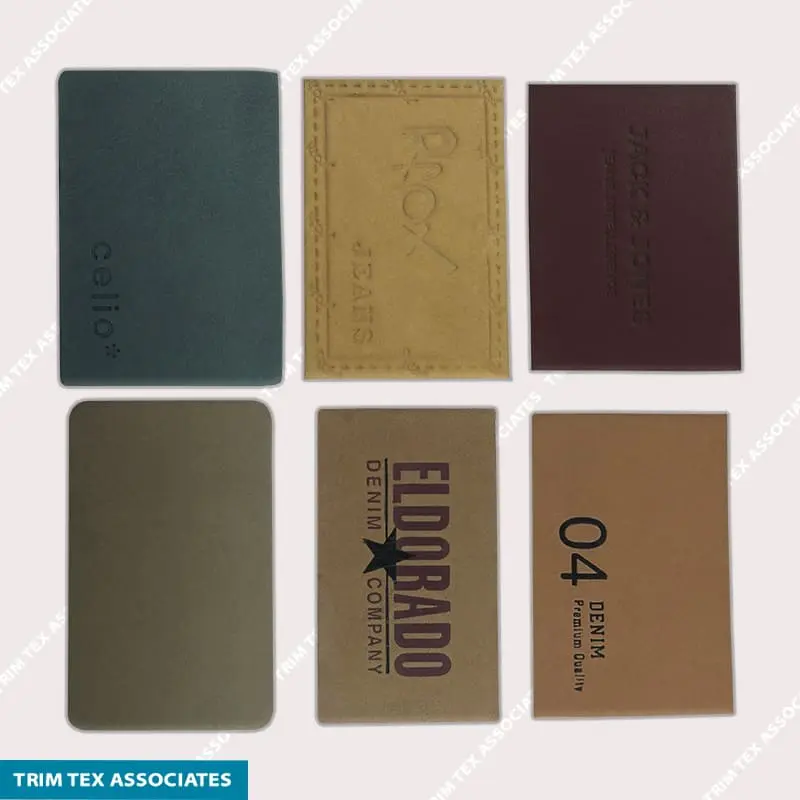
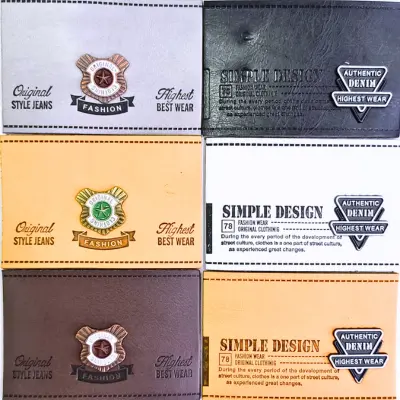
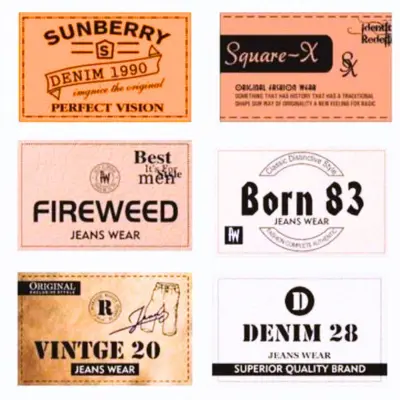
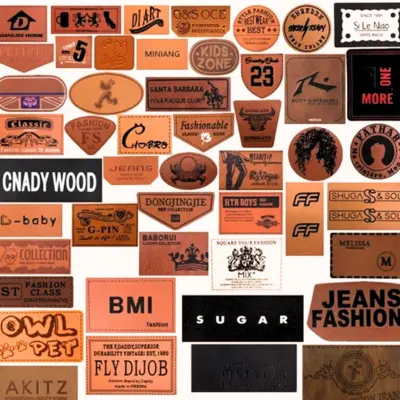
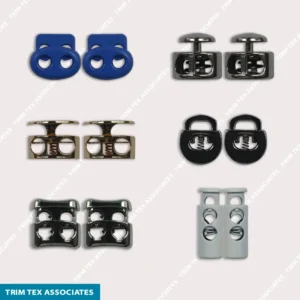
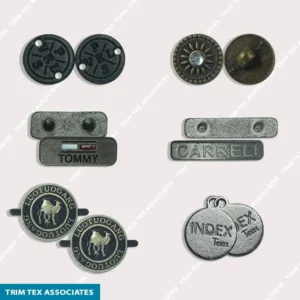
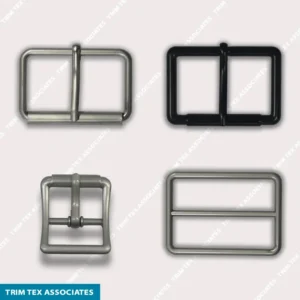
Reviews
There are no reviews yet.